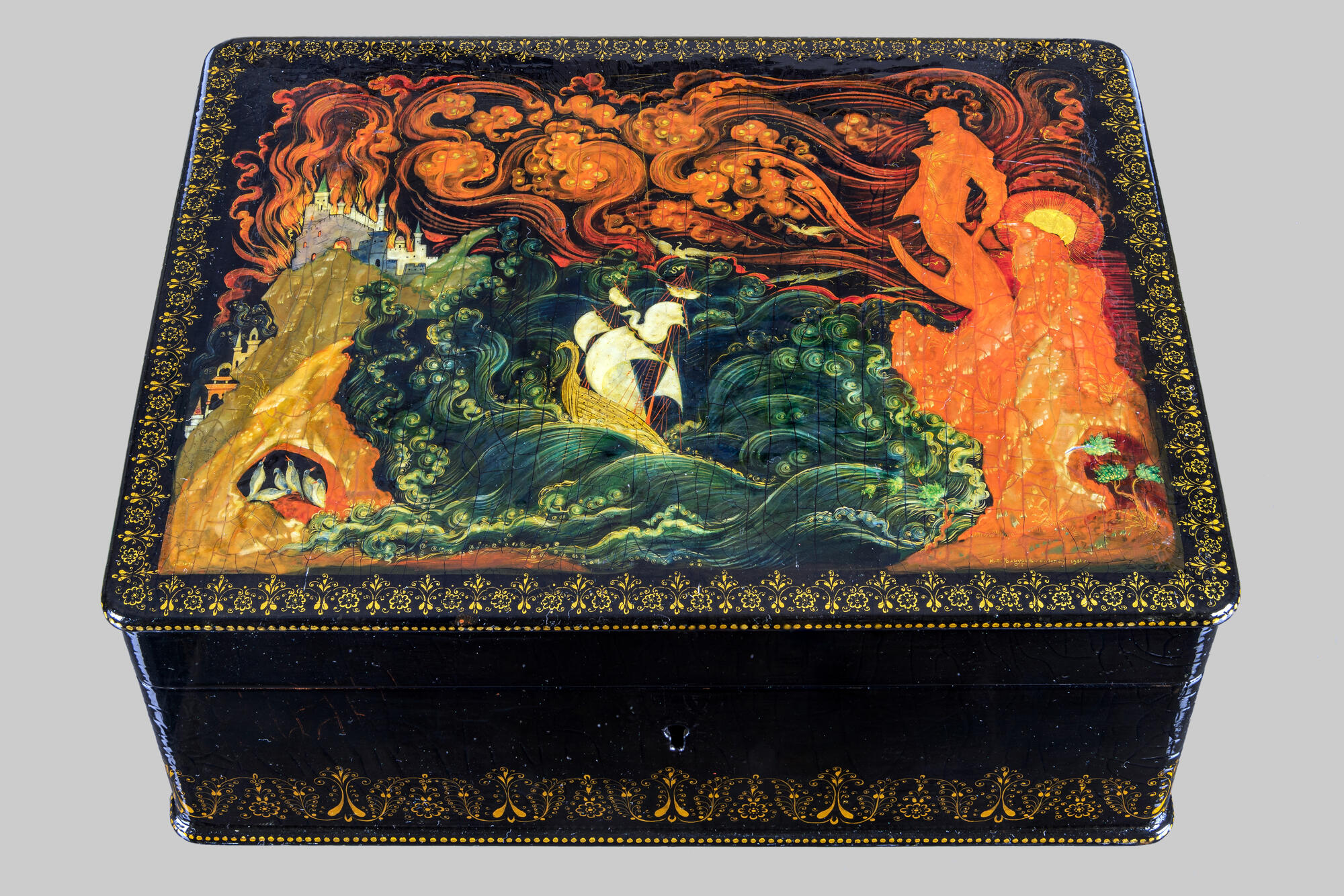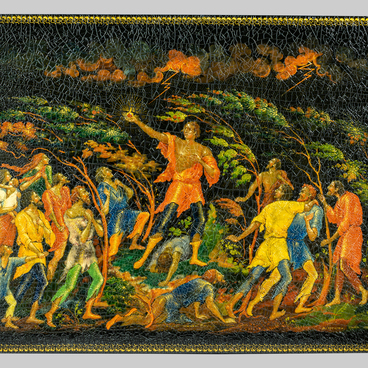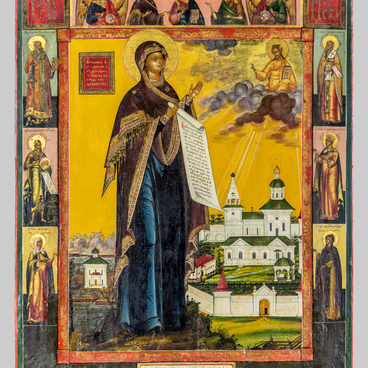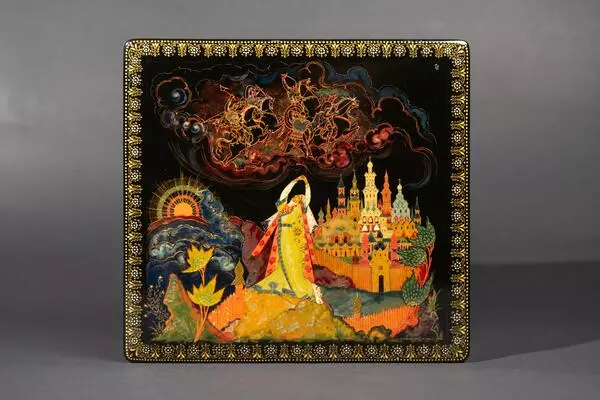Ivan Vakurov created the composition ‘The Stormy Petrel’ in 1931. In this lacquer miniature, he depicted the silhouette of a worker with a hammer, who seems to be rising out of a stone block. Fiery clouds are looming over the sea. As in other works by Vakurov, the black background plays an important role here. The artist has left large pieces of background empty, connecting them to the red spots that symbolize revolution and the beginning of a new life.
Gorky’s “Song of the Stormy Petrel” was of special importance to the artist, and he repeatedly turned to it in his works. Ivan Vakurov wrote in his autobiography, “I love all of Gorky”s books. His “Stormy Petrel” predicted the revolution. I will never forget how a provincial artist in Perm, where I then worked as a make-up artist, recited this poem in 1919. His performance was so powerful it gave me goosebumps. That was when I decided to paint the 'Song of the Stormy Petrel.' I wanted to understand what the author was thinking about. I wanted to paint the sea and sky as pools of boiling metal, and for the mountains to look as if they were being attacked by a storm. And all of that had to be coming from a man standing on a red mountain.’
Vakurov’s work shows that the Palekh painters were capable of making independent artistic decisions. This is not a straightforward illustration of the text, but a more complex, distinctive artistic image of a “stormbringer.” This is confirmed by the words of Maxim Gorky about Ivan Vakurov’s painting. In his memoirs, the artist wrote, ‘When an opportunity presented itself, I asked the writer what he thought about my painting. Alexei Maksimovich told me, 'This is, of course, your stormy petrel, ' but he praised me nonetheless and shook my hand.’ The lacquer miniature turned out to be so impressive that people started calling Vakurov the ‘Palekh Petrel.’
Like the best examples of local lacquer miniatures, this work reminds us that the Palekh tradition is not limited to the standard boundaries of applied art. Its essence is much bigger and deeper than the clichés so often produced by art critics. The usual phrases like ‘fairytale Palekh’ and ‘the homeland of the Firebird’ do not detract from the merits of miniature art, but still limit its possibilities. At the same time, the best works of the Palekh artists, including the ‘Stormy Petrel’ with its original interpretation, characterize this art as one of the most important phenomena of the world culture.
Gorky’s “Song of the Stormy Petrel” was of special importance to the artist, and he repeatedly turned to it in his works. Ivan Vakurov wrote in his autobiography, “I love all of Gorky”s books. His “Stormy Petrel” predicted the revolution. I will never forget how a provincial artist in Perm, where I then worked as a make-up artist, recited this poem in 1919. His performance was so powerful it gave me goosebumps. That was when I decided to paint the 'Song of the Stormy Petrel.' I wanted to understand what the author was thinking about. I wanted to paint the sea and sky as pools of boiling metal, and for the mountains to look as if they were being attacked by a storm. And all of that had to be coming from a man standing on a red mountain.’
Vakurov’s work shows that the Palekh painters were capable of making independent artistic decisions. This is not a straightforward illustration of the text, but a more complex, distinctive artistic image of a “stormbringer.” This is confirmed by the words of Maxim Gorky about Ivan Vakurov’s painting. In his memoirs, the artist wrote, ‘When an opportunity presented itself, I asked the writer what he thought about my painting. Alexei Maksimovich told me, 'This is, of course, your stormy petrel, ' but he praised me nonetheless and shook my hand.’ The lacquer miniature turned out to be so impressive that people started calling Vakurov the ‘Palekh Petrel.’
Like the best examples of local lacquer miniatures, this work reminds us that the Palekh tradition is not limited to the standard boundaries of applied art. Its essence is much bigger and deeper than the clichés so often produced by art critics. The usual phrases like ‘fairytale Palekh’ and ‘the homeland of the Firebird’ do not detract from the merits of miniature art, but still limit its possibilities. At the same time, the best works of the Palekh artists, including the ‘Stormy Petrel’ with its original interpretation, characterize this art as one of the most important phenomena of the world culture.





